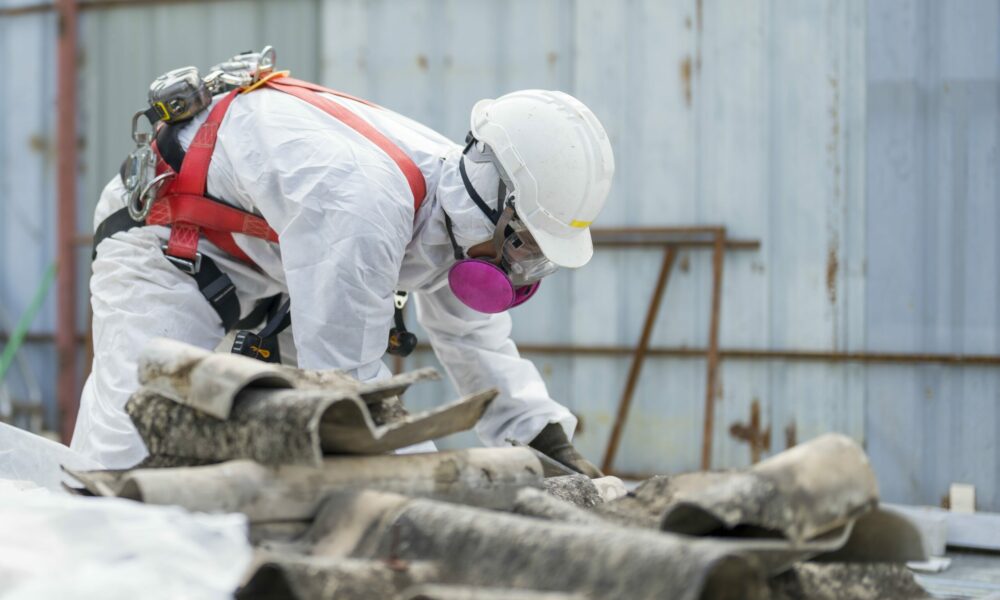EPA Enforces Asbestos Ban: A New Era of Public Health Safety

The Environmental Protection Agency (EPA) has made a historic move by implementing a full ban on asbestos reported by Mesowatch today, a substance once revered for its versatility and durability but now infamous for its deadly health risks. This decisive action marks a critical turning point in the battle against asbestos-related diseases, offering renewed hope for a safer, healthier future.
Asbestos: From Miracle Material to Public Health Menace
Asbestos was once celebrated for its resistance to heat and corrosion, leading to its widespread use in construction, manufacturing, and various other industries. However, the very properties that made asbestos a valued material also make it a silent killer. The fibers, when disturbed, become airborne and can be inhaled, leading to severe health issues such as mesothelioma, lung cancer, and asbestosis.
For decades, the dangers of asbestos have been well-documented, yet its use persisted in many sectors. The recent EPA ban closes a dark chapter in industrial history, aiming to prevent further harm to public health.
Key Provisions of the EPA Ban
The EPA’s ban on asbestos is comprehensive and far-reaching, addressing several critical areas:
- Prohibition of Use: The ban outlaws the manufacture, importation, processing, and distribution of asbestos and asbestos-containing products across the United States.
- Elimination of Loopholes: Previous regulations allowed certain uses of asbestos to continue under specific conditions. The new ban closes these loopholes, ensuring a complete cessation of asbestos use.
- Stricter Regulatory Framework: The ban sets a new standard for environmental and public health regulations, potentially influencing future policies on other hazardous materials.
This ban is a result of years of advocacy, scientific research, and public pressure, reflecting a growing consensus on the need to eliminate asbestos from the environment entirely.
Impact on Industries and Public Health
The asbestos ban is expected to have a profound impact on various industries. While some sectors may face challenges in adapting to the new regulations, the long-term benefits for public health far outweigh these concerns. Safer alternatives to asbestos, such as fiberglass and mineral wool, are already available and will likely become more prevalent as industries shift away from asbestos.
For public health advocates, the ban is a monumental victory. It is anticipated to significantly reduce the incidence of asbestos-related diseases, which continue to claim thousands of lives each year. The ban also sends a clear message about the importance of prioritizing health and safety over industrial convenience.
A Global Perspective: The U.S. Joins the Asbestos-Free Movement
The United States now joins a growing list of countries that have banned asbestos. This global movement reflects a broader understanding of the severe health risks associated with asbestos exposure and the need for coordinated international efforts to eliminate its use.
Countries like Canada, the United Kingdom, and Australia have already implemented similar bans, leading to significant reductions in asbestos-related diseases. The U.S. ban is expected to bolster these international efforts, encouraging other nations to follow suit.
Protecting Yourself in a Post-Asbestos World
While the ban marks a significant step forward, asbestos remains a concern, particularly in older buildings and products. Individuals should continue to take precautions, especially if they live or work in environments where asbestos might still be present.
- Regular Health Screenings: Individuals with a history of asbestos exposure should undergo regular medical check-ups to detect any early signs of asbestos-related diseases.
- Safe Asbestos Removal: If asbestos is suspected in a home or workplace, professional removal services should be employed to ensure safe and thorough handling.
- Stay Informed: As new regulations and safety measures are implemented, staying informed about the latest developments can help individuals protect themselves and their families.
Frequently Asked Questions
- Why did the EPA decide to ban asbestos now?
The ban follows years of scientific research and advocacy highlighting the severe health risks of asbestos exposure. It reflects a growing consensus on the need to eliminate asbestos from all aspects of life.
- How will the ban affect industries that still use asbestos?
Industries will need to transition to safer alternatives, which may pose initial challenges but ultimately lead to safer workplaces and products.
- What should I do if I suspect asbestos in my home?
Contact a professional asbestos removal service to assess and safely remove any asbestos-containing materials.
- Will the ban eliminate all asbestos-related health risks?
While the ban will significantly reduce future risks, existing asbestos in older buildings and products still poses a danger. Continued vigilance is necessary.
- How can I support asbestos-related public health initiatives?
Joining advocacy groups, staying informed, and spreading awareness about the dangers of asbestos can help further the cause of public health protection.
A Safer Future Begins Today
The EPA’s full ban on asbestos marks a new beginning in the fight against one of the most dangerous industrial materials ever used. This decision not only protects future generations but also honors the lives lost to asbestos-related diseases. As the nation moves forward, the focus will be on ensuring compliance with the ban, removing existing asbestos, and continuing to advocate for a world free from this deadly substance. The end of asbestos is a triumph for public health, and it serves as a powerful reminder of the importance of putting safety first in all aspects of life.
Read More From Techbullion And Businesnewswire.com





